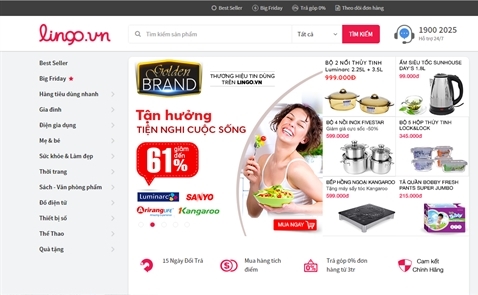
The 2015 E-commerce Report released by the agency showed that e-commerce revenue in 2015 reached $4.07 billion, an increase of 37 percent compared with 2014.
The figure is expected to increase to $10 billion in the next five years. Still young, the e-commerce sector has the most desirable growth rate in Vietnam.
However, a series of e-commerce floors had to shut down because of big losses. Beyeu, Deca and Lingo left the market after long period of struggling to survive.
Nguyen Thanh Hung, chair of the Vietnam E-commerce Association (Vecom), said he could not see any contradictions between the closure of the e-commerce floors and the predicted high growth rate of the e-commerce market.
“E-commerce has been growing very fast in the past few years with two-digit growth rates year after year,” Hung said.
When building up the e-commerce index, the Ministry of Industry and Trade predicted some development periods of the business sector.
The first period, from 1997 to 2010, was the time when e-commerce took shape. The second, in 2010-2015, was the period to ‘reach adulthood’ and from 2016, the fast growth period.
There were signs in 2015 which foretold that e-commerce would enter a fast-growing period. The market is getting larger, the number of internet users has increased rapidly and the number of people accessing internet from their smartphones has soared.
Meanwhile, B2C, B2B and G2B transactions have been developing very rapidly.
“E-commerce floor is just a part of e-commerce and it is not the mirror which reflects the whole situation of the e-commerce sector,” Hung said.
He went on to say that more and more businesses have joined the e-commerce market, especially under the modes of B2B and G2C.
Five years ago, only 30 percent of Vietnamese businesses had websites or used mobile apps. In 2015, 45 percent of 500,000 businesses had websites.
In 2014, Vietnam had 270,000 domain names, while the figure rose to 340,000 by October 2015 and is expected to exceed the threshold of 400,000 in 2016.
Many of 500,000 businesses have tens or hundreds of domain names each.
The strong development of e-commerce can also be seen in online ads about aviation services and tourism.
The number of e-tickets sold in 2015-2016 increased sharply. All hotels and guesthouses now have wi-fi and run online booking systems.
